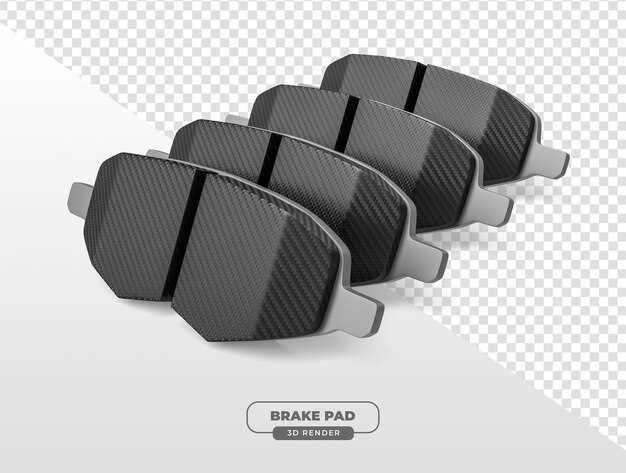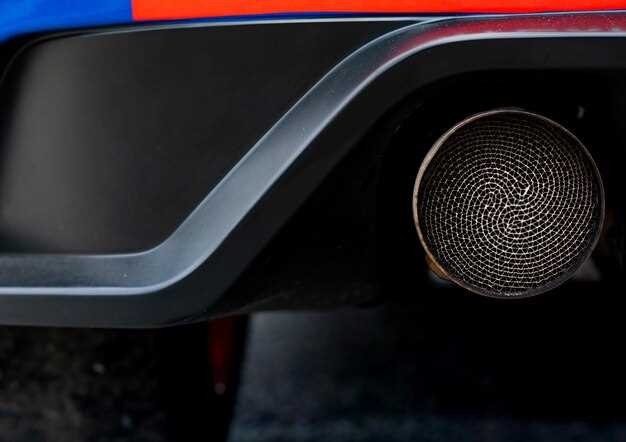

Cornering performance is a crucial aspect of vehicle dynamics, significantly influencing the overall driving experience. One of the key components that affect a car’s stability during turns is the anti-roll bar, or sway bar. Proper tuning of these bars can enhance a vehicle’s ability to maintain traction, allowing for sharper and more controlled cornering.
Anti-roll bars work by reducing body roll when a vehicle is subjected to lateral forces during cornering. By connecting opposite wheels, they help distribute weight more evenly, which in turn stabilizes the car’s handling characteristics. However, not all setups are the same; tuning the stiffness and parameters of these bars can lead to a marked improvement in stability and cornering response, ensuring that drivers can tackle turns with confidence.
Understanding how to optimize the performance of anti-roll bars can transform a standard vehicle into a more agile machine. By carefully selecting the right bar stiffness and adjusting the mounting locations, enthusiasts can tailor their car’s behavior to match their driving style and the specific demands of the track or road. This article delves into the principles of anti-roll bar tuning, highlighting essential techniques for achieving enhanced stability and performance in cornering situations.
Understanding the Role of Sway Bars in Vehicle Dynamics

Sway bars, also known as anti-roll bars or stabilizer bars, play a crucial role in enhancing vehicle stability during cornering. These bars connect the left and right sides of the suspension, helping to distribute weight evenly across the vehicle. This distribution is vital when navigating corners, as it reduces body roll and maintains better contact between the tires and the road surface.
When a vehicle enters a corner, centrifugal force pushes the body outward, causing it to lean. A sway bar counteracts this tendency by resisting the lateral movement of the body. By doing so, it minimizes the risk of losing traction, which is essential for maintaining stability and control. A properly tuned sway bar can significantly improve cornering performance by ensuring that both the inside and outside tires maintain adequate grip.
The stiffness of a sway bar is a critical factor in its effectiveness. A stiffer bar will reduce body roll even further, enhancing stability during tight corners. However, excessive stiffness can lead to a harsh ride and may reduce traction on bumpy surfaces. Therefore, finding the right balance is essential for optimal performance. Adjustments to the sway bar can be necessary based on driving style and conditions, making it a key component in the overall tuning of a vehicle’s suspension system.
In summary, sway bars are fundamental in managing vehicle dynamics, particularly during cornering. They enhance stability and contribute to handling balance, allowing for a confident and controlled driving experience. Proper understanding and tuning of sway bars can lead to significant improvements in cornering performance and overall driving enjoyment.
Adjusting Sway Bar Stiffness for Optimal Corner Stability

Fine-tuning the stiffness of sway bars is crucial for enhancing corner stability in vehicles. Sway bars, also known as anti-roll bars, play a significant role in controlling body roll during cornering. By adjusting their stiffness, drivers can optimize the vehicle’s handling characteristics to suit different driving conditions and personal preferences.
When a vehicle enters a corner, the weight shifts toward the outside wheels, causing body roll. A stiffer sway bar helps to minimize this roll by transferring weight more effectively across the axle. This results in improved tire grip on the outside wheels, enhancing cornering performance. However, over-stiffening a sway bar can lead to reduced traction, particularly on uneven surfaces or during sudden maneuvers.
To achieve optimal corner stability, it’s important to strike a balance. Start by assessing the vehicle’s current sway bar setup and understand how stiffness affects your driving style and the conditions you typically encounter. If the car feels too loose or has excessive body roll while cornering, consider increasing the sway bar stiffness. Conversely, if the vehicle feels overly harsh or bouncy, reducing the stiffness may provide a smoother ride.
Additionally, experimentation is key. Gradually adjust the stiffness, taking the car out for test drives after each modification. Pay attention to how the changes impact cornering behavior, steering response, and overall stability. Keep in mind that the ideal setup may vary between different types of corners, such as sharp turns versus gentle bends.
Ultimately, the goal of adjusting sway bar stiffness is to achieve a well-balanced setup that enhances corner stability without compromising ride comfort. Regularly reviewing and tuning the sway bars, especially after modifications to other suspension components or changes in driving style, is essential for maintaining optimal performance on the road or track.
Evaluating the Impact of Anti-Roll Bar Setup on Handling Characteristics
Anti-roll bars, also known as sway bars, play a crucial role in a vehicle’s handling during cornering. The primary function of these bars is to reduce body roll, enhancing the stability of the vehicle as it navigates turns. By connecting the left and right sides of the suspension, the anti-roll bar helps distribute weight more evenly across the tires, thus maintaining better traction and control when cornering.
When configuring the anti-roll bar setup, several factors must be taken into account, including the stiffness of the bar and its diameter. A stiffer bar will reduce body roll further but can also lead to a harsher ride and may compromise grip on uneven surfaces. Conversely, a softer bar allows for more body movement, which can improve grip on rough roads but may result in excessive roll during sharp turns. Finding the optimal balance is essential for maximizing cornering performance without sacrificing ride comfort.
The impact of anti-roll bar adjustments can also vary based on the overall suspension setup. For instance, a vehicle with a predominantly front-wheel-drive layout may benefit from a stiffer front bar to reduce understeer during cornering. In contrast, a rear-wheel-drive car might require a different approach, focusing on rear anti-roll bar stiffness to manage oversteer. Understanding the dynamics of the vehicle is key to making informed adjustments.
Furthermore, tuning the anti-roll bars can influence the vehicle’s response to steering input. A well-tuned sway bar setup can enhance the predictability of handling characteristics, making it easier for drivers to anticipate how the vehicle will behave while cornering. Adjustments should be made in conjunction with testing to determine the best configuration for individual driving styles and track conditions.
Ultimately, evaluating the impact of anti-roll bar setup on handling characteristics involves a careful assessment of how changes affect cornering behavior. By analyzing the interaction between body roll, suspension stiffness, and traction, drivers can achieve improved performance and a more engaging driving experience.







